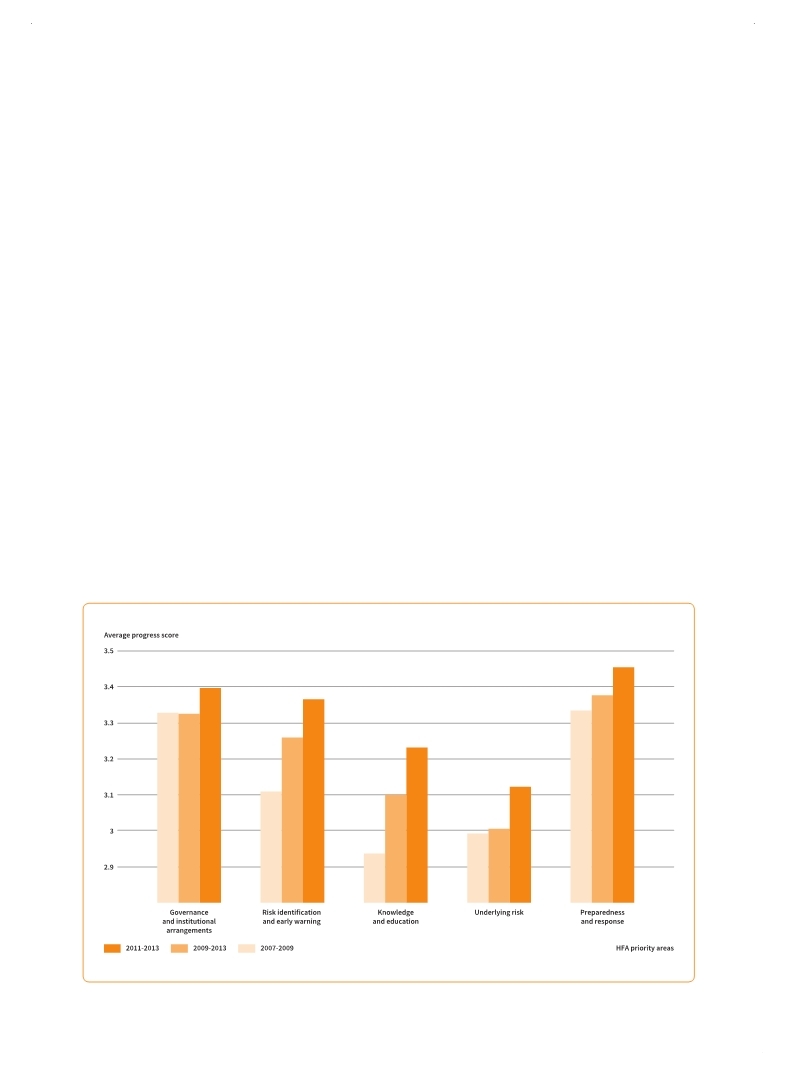 |
Global Assessment Report on Disaster Risk Reduction 2015
Making development sustainable: The future of disaster risk management |
 |
Global Assessment Report on Disaster Risk Reduction 2015
Making development sustainable: The future of disaster risk management |
|
|

114
Part II
Since the declaration of the IDNDR in 1990 and in particular since the adoption of the HFA in 2005, the disaster risk management sector has grown exponentially in both size and salience.
It could be argued that the disaster risk management sector first became conscious of its own existence at the International Conference on Disaster Mitigation Program Implementation in Ocho Rios, Jamaica in 1984 (Virginia Polytechnic Institute, 1985
Virginia Polytechnic Institute. 1985,Proceedings of the International Conference on Disaster Mitigation Program Implementation, Ocho Rios, Jamaica, November 12-16, 1984.. . PreventionWeb, the United Nations-hosted global portal for disaster risk management information, now identifies 32,600 professionals involved in the disaster risk management sector, compared to 5,000 in 2006.1 This represents only a small proportion of those who actually work in the sector at the national or local level. According to PreventionWeb, in 2013 there were 1,127 conferences, seminars, workshops and other events that connected and integrated the sector, again reflecting only a small proportion of the events occurring on the national and local stage.
As the sector has grown, government self-assessments prepared using the HFA Monitor (UNISDR, 2011b
UNISDR. 2011b,Hyogo Framework for Action 2005-2015 Building the Resilience of Nations and Communities to Disasters: Mid-Term Review 2010-2011, Geneva, Switzerland: UNISDR.. . UNISDR, The German Committee for Disaster Reduction and EUROPA Major Hazards Agreement. 2009,Implementing the Hyogo Framework for Action in Europe: Advances and Challenges, Report for the period 2007- 2009. Geneva.. . (Source: UNISDR, 2013a
UNISDR. 2013a,Global Assessment Report on Disaster Risk Reduction: From Shared Risk to Shared Value: the Business Case for Disaster Risk Reduction, Geneva, Switzerland: UNISDR.. . Figure II.1 Progress in implementing the HFA (2007-2013)
|
 
Page 1Page 10Page 20Page 30Page 40Page 50Page 60Page 70Page 80Page 90Page 100Page 104Page 105Page 106Page 107Page 108Page 109Page 110Page 111Page 112Page 113Page 114Page 115->Page 116Page 117Page 118Page 119Page 120Page 121Page 122Page 123Page 124Page 125Page 126Page 127Page 128Page 130Page 140Page 150Page 160Page 170Page 180Page 190Page 200Page 210Page 220Page 230Page 240Page 250Page 260Page 270Page 280Page 290Page 300Page 310
|
|
 
|
 
|
